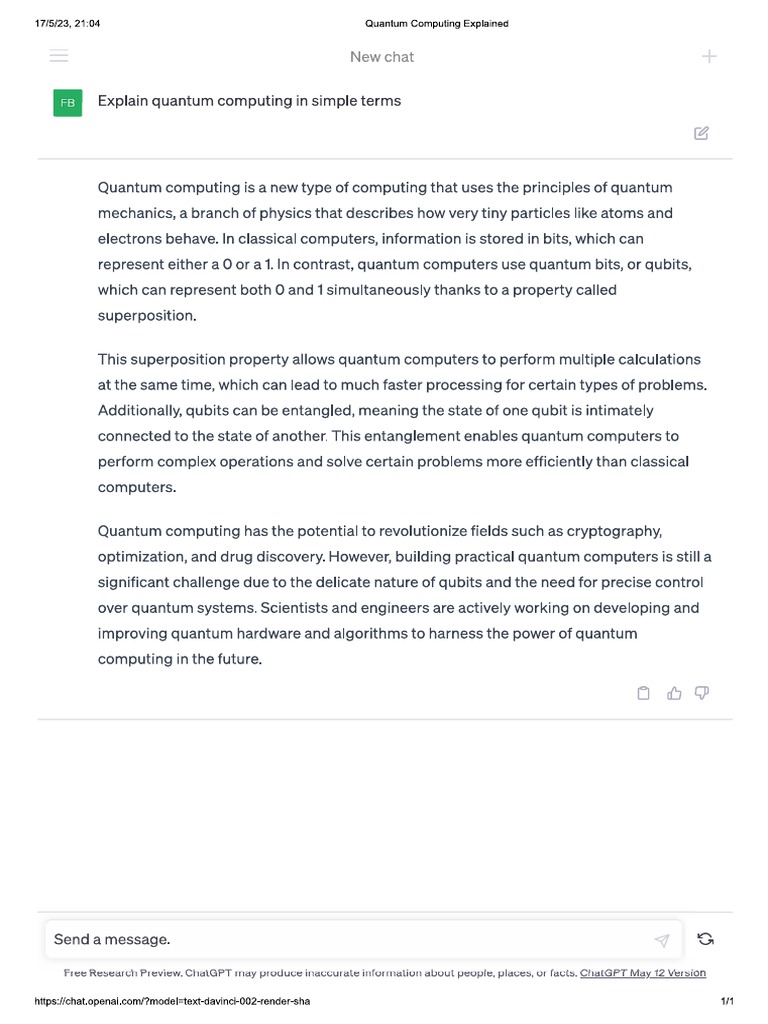In a world that is increasingly defined by technology, the advent of quantum computing signifies a transformative shift akin to the transition from horse-drawn carriages to automobiles. At its core, a quantum computer harnesses the principles of quantum mechanics to process information in ways that classical computers cannot, enabling unprecedented capabilities in computation and problem-solving.
To comprehend the essence of a quantum computer, it is helpful to embark on a metaphorical journey. Imagine a vast library filled with books, where each book represents a potential solution to a complex problem. A classical computer is akin to a diligent librarian who can only read one book at a time, meticulously searching through the tomes until the answer is found. In contrast, a quantum computer is like a magical librarian who, simultaneously, can read every book in the library at once. This extraordinary ability to process multiple possibilities concurrently underpins the remarkable efficiency of quantum computing.
The foundational elements of quantum computing are rooted in two principal concepts: qubits and superposition. A classical bit, the basic unit of information in conventional computing, can exist in precisely one of two states: 0 or 1. In stark contrast, a qubit, the building block of quantum information, can exist not only in states 0 and 1 but also in a superposition of both states simultaneously. This is comparable to spinning a coin, which can be both heads and tails while in motion; it is only upon observation that the coin settles into one definitive state.
Moreover, the concept of entanglement further deepens our understanding of quantum computers. When qubits become entangled, the state of one qubit becomes intrinsically linked to the state of another, regardless of the distance separating them. This phenomenon can be likened to a pair of dancers performing an intricate ballet; even when separated by great distances, their movements remain elegantly coordinated. This interconnectedness allows quantum computers to perform complex computations with an efficiency unattainable by their classical counterparts.
As we delve deeper into the unique appeal of quantum computing, we can appreciate its potential capabilities across various domains. One of the most promising applications lies in cryptography. Traditional encryption methods rely on the computational difficulty of certain mathematical problems. Quantum computers possess the ability to break these encryptions through algorithms like Shor’s algorithm, which can factorize large numbers exponentially faster than classical counterparts. This shift necessitates the exploration of quantum-resistant algorithms, fostering a new era of secure communication.
In addition to cryptography, quantum computing offers transformative prospects in the realm of drug discovery, where the complexities of molecular structures pose significant challenges. Classical simulations of molecular interactions can take years or even decades. In contrast, quantum computers can simulate and analyze these structures at an unprecedented scale, leading to accelerated discoveries in pharmaceuticals and materials science. The potential to revolutionize healthcare and catalyze the development of new materials signifies the profound implications of this technology.
The arena of artificial intelligence (AI) also stands to benefit from quantum computing. Machine learning, a subset of AI, often necessitates vast amounts of data to improve algorithms. Quantum computers can process this data more efficiently, allowing them to learn and evolve at a pace that classical systems cannot match. This could accelerate advancements in automation, data analysis, and predictive modeling, revolutionizing various industries and enhancing our everyday lives.
Despite the immense promise of quantum computing, it is essential to acknowledge the challenges and limitations that accompany this endeavor. The physical realization of quantum computers requires maintaining qubits in coherent states, a highly delicate task susceptible to environmental disturbances. Researchers are grappling with issues of decoherence and quantum error correction, which involve strategies to mitigate these disturbances and maintain the integrity of computations. As the field progresses, overcoming these hurdles will be pivotal for the practical deployment of quantum technology.
Furthermore, the current quantum computers are in a nascent stage, often referred to as Noisy Intermediate-Scale Quantum (NISQ) devices. These machines, while demonstrating remarkable advancements, are still limited in their capability to perform complex, large-scale computations reliably. The journey towards the creation of fault-tolerant quantum computers—machines that can operate without significant errors—is one that requires persistent research and technological innovation.
In conclusion, the phenomenon of quantum computing envelopes a plethora of fascinating concepts and possibilities that transcend the limitations of classical computing. Drawing upon the enchanting metaphor of a magical librarian, we recognize the extraordinary potential of quantum computers to revolutionize problem-solving across various domains—from cryptography and drug discovery to the evolution of artificial intelligence. Although significant challenges remain, the relentless march of innovation promises a future in which quantum computing will fundamentally reshape our understanding of computation and its applications. As researchers continue to refine these technologies, society stands on the cusp of an unprecedented era of discovery and innovation.












